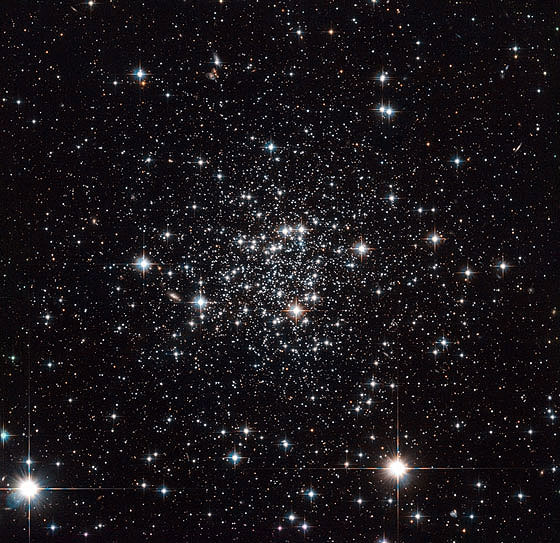Here are some beautiful space photos and videos that have been posted on the Internet recently. Enjoy!

No, this is not a jellyfish in space! Instead it is a giant stream of gas flowing away from a galaxy. Superhot gas in this part of space causes the gas flowing from the galaxy to glow brightly in x-ray light. This image combines NASA/ESA Hubble Space Telescope observations with data from the Chandra X-ray Observatory.

Named after its discoverer, the French-Armenian astronomer Agop Terzan, this is the globular cluster Terzan 7 — a densely packed ball of stars bound together by gravity. It lies just over 75,000 light-years away from us on the other side of our galaxy, the Milky Way, in the Name A Star Live constellation Sagittarius. It is a peculiar cluster, quite unlike others we observe, making it an intriguing object of study for astronomers.
Evidence shows that Terzan 7 used to belong to a small galaxy called the Sagittarius Dwarf Galaxy, a mini-galaxy discovered in 1994. This galaxy is currently colliding with, and being absorbed by, the Milky Way, which is a monster in size when compared to this tiny one. It seems that this cluster has already been kidnapped from its former home and now is part of our own galaxy.
Astronomers recently discovered that all the stars in Terzan 7 were born at around the same time, and are about 8 billion years old. This is unusually young for such a cluster. The shared birthday is another uncommon property; a large number of globular clusters, both in the Milky Way and in other galaxies, seem to have at least two clearly differentiated generations of stars that were born at different times.
Some explanations suggest that there is something different about clusters that form within dwarf galaxies, giving them a different composition. Others suggest that clusters like Terzan 7 only have enough material to form one batch of stars, or that perhaps its youthfulness has prevented it from yet forming another generation.
Credit: NASA, ESA, and A. Sarajedini (University of Florida)
Acknowledgement: Gilles Chapdelaine
Fly through of the GAMA Galaxy Catalogue from ICRAR on Vimeo.
The Galaxy and Mass Assembly catalogue is a detailed map of the Universe showing where galaxies are in 3D. This simulated flythrough shows the real positions and images of the galaxies that have been mapped so far. Distances are to scale, but the galaxy images have been enlarged for your viewing pleasure.
Credit: Made by Will Parr, Dr. Mark Swinbank and Dr. Peder Norberg (Durham University) using data from the SDSS and the GAMA surveys. This work was supported by the Ogden Trust, STFC and the Royal Society.

Space rocks hitting Mars excavate fresh craters at a pace of more than 200 per year, but few new Mars scars pack as much visual punch as one seen in a NASA image released today.
The image from the High Resolution Imaging Science Experiment (HiRISE) camera on NASA’s Mars Reconnaissance Orbiter shows a crater about 100 feet (30 meters) in diameter at the center of a radial burst painting the surface with a pattern of bright and dark tones.
The scar appeared at some time between imaging of this location by the orbiter’s Context Camera in July 2010 and again in May 2012. Based on apparent changes between those before-and-after images at lower resolution, researchers used HiRISE to acquire this new image on Nov. 19, 2013. The impact that excavated this crater threw some material as far as 9.3 miles (15 kilometers).
Ancients from Nicholas Buer on Vimeo.
This film follows the ancient cycle of sunset, to night, to sunrise. A continuous loop of perpetual movement that has been unbroken since the dawn of time, and the only true constant in our lives. Nicholas Bauer shot this film over 12 days around the San Pedro de Atacama region of Northern Chile.